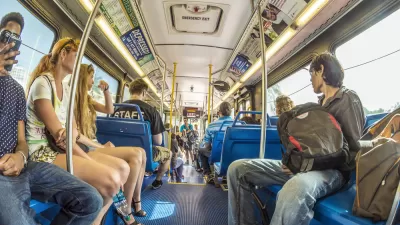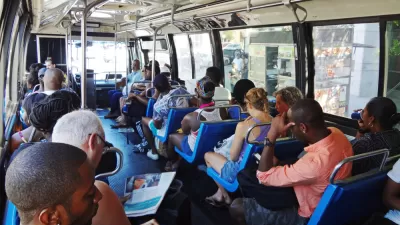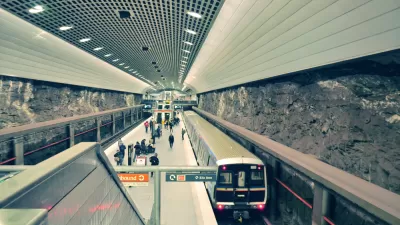A survey of public transit users indicates riders want to see more tech features that improve their experience, such as trip planning and improved payment platforms.

According to an article by Skip Descant, "[p]ublic transit riders in post-lockdown America want their buses and trains to arrive on time, with shorter wait times, and they want to be kept up to speed on crowding and cleanliness." While these might seem like basic expectations, the pandemic highlighted the gaps in transit service and, at the same time, accelerated the implementation of certain service improvements that riders will expect to continue in the post-COVID era.
A recent survey of 1,200 transit riders showed that most people "want apps or tech features to improve the transit experience. These can come in the form of real-time vehicle-crowding data, or technology that integrates trip planning across multiple modes and payment." The survey also showed that 40 percent of transit riders use two forms of transportation during their commute, while 20 percent use three forms of mobility, "making the case for better multimodal integration across transportation systems." Respondents also indicated a desire to see continued protocols to limit crowding.
"COVID-19 has shown itself to be a time of innovation across government sectors — some of it forced, while in other cases hastening trends already in place — and presents opportunities for better systems than before the pandemic, say observers." To help transit recover, transit agencies can use rider feedback on pandemic measures to inform their decisions about how to improve future service and provide "compelling options" that make it easier for commuters to ditch their cars.
FULL STORY: Transit Riders Expect Tech Improvements Post-COVID

Alabama: Trump Terminates Settlements for Black Communities Harmed By Raw Sewage
Trump deemed the landmark civil rights agreement “illegal DEI and environmental justice policy.”

Planetizen Federal Action Tracker
A weekly monitor of how Trump’s orders and actions are impacting planners and planning in America.

The 120 Year Old Tiny Home Villages That Sheltered San Francisco’s Earthquake Refugees
More than a century ago, San Francisco mobilized to house thousands of residents displaced by the 1906 earthquake. Could their strategy offer a model for the present?

In Both Crashes and Crime, Public Transportation is Far Safer than Driving
Contrary to popular assumptions, public transportation has far lower crash and crime rates than automobile travel. For safer communities, improve and encourage transit travel.

Report: Zoning Reforms Should Complement Nashville’s Ambitious Transit Plan
Without reform, restrictive zoning codes will limit the impact of the city’s planned transit expansion and could exclude some of the residents who depend on transit the most.

Judge Orders Release of Frozen IRA, IIJA Funding
The decision is a victory for environmental groups who charged that freezing funds for critical infrastructure and disaster response programs caused “real and irreparable harm” to communities.
Urban Design for Planners 1: Software Tools
This six-course series explores essential urban design concepts using open source software and equips planners with the tools they need to participate fully in the urban design process.
Planning for Universal Design
Learn the tools for implementing Universal Design in planning regulations.
Clanton & Associates, Inc.
Jessamine County Fiscal Court
Institute for Housing and Urban Development Studies (IHS)
City of Grandview
Harvard GSD Executive Education
Toledo-Lucas County Plan Commissions
Salt Lake City
NYU Wagner Graduate School of Public Service





























